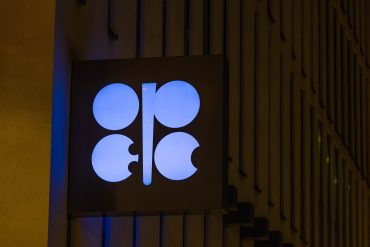
- Capital Allocation
- Commodities
- Treasury Management
Gold Surges Past $3,700 as Tech Firms Shift Treasury Strategies
5 minute read

Global gold prices surge past $3,700 as tech companies revamp treasury strategies amid rising geopolitical risks
Key Takeaways
- Gold reaches record $3,759 per ounce amid geopolitical tensions and rate cut expectations, marking a 43% yearly increase that positions 2025 for gold’s best performance since 1979.
- Tech companies reassess treasury strategies as elevated gold prices signal investor risk aversion, prompting diversification of cash reserves and more conservative capital allocation approaches.
- Mining operations embrace renewable energy with Gold Fields’ $296 million St Ives project featuring 42MW of wind power and 35MW solar capacity, targeting 70% renewable electricity coverage.
Introduction
Record gold prices are rewriting the playbook for corporate treasuries and institutional investors. With spot prices climbing past $3,700/oz, the metal is not just reacting to inflation or monetary policy—it’s reflecting deep-seated economic uncertainty. As the Federal Reserve signals potential rate cuts, and global holders of reserves recalibrate exposure, gold is emerging as a key pillar of risk management.
This dramatic price acceleration reflects mounting geopolitical tensions, anticipated Federal Reserve policy shifts, and central banks’ strategic moves away from dollar dependency. The rally carries significant implications for technology companies, forcing reassessment of treasury management and capital allocation strategies.
Key Developments
Gold extended its record-setting run, briefly touching $3,759/oz before holding above $3,740 as traders priced in further Federal Reserve rate cuts and a softer U.S. dollar. Futures tracked the move higher, while markets looked to upcoming Fed communication for confirmation that policy is shifting toward accommodation. The combination of declining real yields and currency weakness continues to lower the opportunity cost of holding non-yielding assets, reinforcing the bid for bullion.
On the demand side, central banks remained a consistent pillar of support, adding 166 tonnes to official reserves in Q2 2025, according to the World Gold Council. Investment flows also firmed: ETFs and other exchange-traded products saw a resurgence of inflows—the strongest first-half momentum since 2020—offsetting softness in jewellery consumption in price-sensitive markets such as China and India. The result is a demand mix that is more institutional and reserve-driven than in prior cycles, helping establish a higher price floor.
Sell-side forecasts have adjusted to the new regime. UBS raised its year-end target to $3,800/oz (with further upside penciled in for 2026), citing the prospect of incremental Fed easing, a softer dollar, and persistent reserve diversification as key catalysts. With policy expectations anchoring near-term direction and official-sector buying providing structural support, the path of least resistance remains skewed to the upside—albeit with higher volatility around macro data and Fed communications.

Market Impact
Gold’s record-breaking rally above $3,700 per ounce has intensified risk-off sentiment across global markets. Investors are rotating capital from equities and higher-yielding instruments into precious metals, with ETFs and exchange-traded products registering inflows after years of mixed demand. The shift underscores gold’s enduring role as a defensive asset class, particularly as expectations of lower Federal Reserve rates reduce the opportunity cost of holding non-yielding assets.
Technology companies are not immune to these dynamics. The surge in gold prices has coincided with greater scrutiny of tech valuations, especially among high-growth and unprofitable firms. According to Goldman Sachs, capital markets are tightening, forcing startups and mid-stage ventures to face tougher due diligence standards, while established tech companies encounter stronger pressure to balance growth initiatives with profitability and liquidity preservation.
Multinational firms also contend with currency volatility as the dollar softens alongside gold’s rise. This environment has accelerated adoption of more sophisticated treasury management practices, including broader hedging strategies and selective diversification of reserves, ensuring balance sheets remain resilient against shifts in foreign exchange markets.
Strategic Insights
The reconfiguration of treasury strategies is becoming a central theme across the technology sector. As gold’s rally signals heightened investor caution, treasury teams are moving beyond traditional cash holdings and exploring allocations to precious metals and commodities. This diversification mirrors central bank behavior, where gold purchases are at multi-year highs, and highlights a broader push to reduce reliance on single-currency reserves.
Lower interest rates strengthen the appeal of gold by reducing the relative cost of holding it, and companies are aligning their strategies accordingly. Rather than viewing gold purely as a crisis hedge, more technology firms are incorporating it into long-term asset allocation frameworks designed to preserve value, support liquidity, and offset volatility in risk-on capital markets.
The current environment is also spurring innovation. Fintech and blockchain ventures are capitalizing on demand for alternative stores of value by developing digital gold platforms and commodity-backed stablecoins. These products aim to combine the stability of physical assets with the accessibility of digital networks, offering treasuries and investors new tools to manage uncertainty.

Expert Opinions and Data
Analysts emphasize that gold’s record-setting trajectory reflects both structural and cyclical factors. Stephen Innes of SPI Asset Management describes gold as a “lifeboat bolted to the deck” in uncertain markets, noting that even modest shifts in interest rate expectations can spark strong flows into the asset. This sentiment is echoed in research from UBS, which recently raised its year-end price target to $3,800 per ounce, citing sustained demand and a softer U.S. dollar.
Industry data reinforce these views. The World Gold Council highlights that central banks have maintained multi-year momentum in gold accumulation, helping establish a higher structural price floor. Demand from long-term holders is establishing a higher price floor, even as jewelry consumption in China and India moderates under the weight of record prices. This structural bid from official institutions and ETFs provides stability that was absent in earlier gold rallies.
Mining executives highlight the importance of sustainability in meeting future demand. Stuart Mathews, Executive Vice President of Gold Fields, has pointed to the company’s $296 million St Ives renewable energy project as evidence that gold production can align with long-term environmental goals. With a target of 70% renewable electricity by 2030, the initiative underscores how supply-side dynamics are adapting alongside demand, ensuring that gold remains both a financial and industrially sustainable asset.
Conclusion
Gold’s rally past $3,700 is more than a speculative surge; it is a signal of structural change in global capital flows. The convergence of softer monetary policy, central bank diversification, and shifting corporate treasury strategies has repositioned the metal at the heart of risk management. For technology companies, the implications are tangible: reserve diversification, disciplined capital allocation, and a cautious balance between growth and liquidity are becoming strategic imperatives.
As 2025 shapes up to be gold’s strongest year since 1979, the message for corporate decision-makers is clear: in a world of uncertainty, gold is no longer simply a crisis hedge—it is an active component of financial strategy. The trajectory into 2026 will depend on monetary policy execution, global liquidity conditions, and the continued willingness of institutions to treat gold not as an alternative, but as an essential pillar of the modern financial system.







